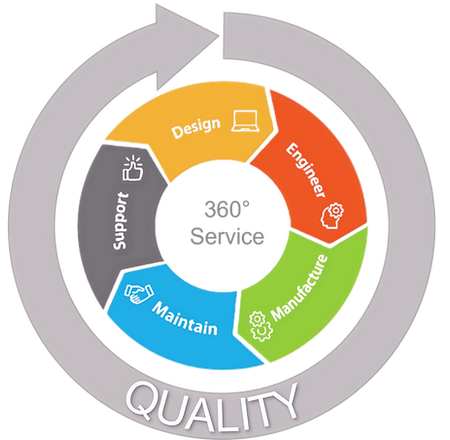Quality
At our company, quality is top priority. We dedicate significant effort and resources to ensure that our products and services meet the highest standards. Your satisfaction is our commitment, and we continually strive for excellence in everything we do.



Client-Centered Design at BMC
We don’t just design—we co-create.
From the first concept to final commissioning, we work side-by-side with our clients to bring their vision to life.
Every solution is tailor-made, ensuring it aligns perfectly with their goals, brand, and operational needs.

Responsive Support to Maximize Uptime
We ensure prompt, adaptable service to keep your equipment running at peak performance.
Support is provided at all stages by a dedicated team of engineers and technicians supported by our 24/7 call centre: Expert Repairs; Access to Spares & Consumables; Equipment Replacement

Expert Engineering in Bespoke Low Voltage Solutions
Our engineering team brings decades of experience in delivering customised low voltage switchgear solutions designed for customer-critical power applications.
We specialise in fit-for-purpose systems that meet the unique demands of Data Centres, Buildings, Pharmaceutical, Food & Beverage, Industry, Transportation Infrastructure and Utilities

Precision Manufacturing at Scale
At BMC, we design and manufacture low-voltage switchgear that enables critical infrastructure worldwide. What makes this possible is not just our engineering expertise, but the integration of our Supply Chain, Production, Manufacturing Execution System (MES), and digital processes ensuring consistency, traceability, and scalability in every panel we produce. A fully digital MES providing real-time visibility across multiple production stages, from enclosure build to final QC. Continuous investment in automation, IoT-enabled tools, and digital inspection systems to drive efficiency and accuracy.

Protect Your Electrical Assets with Proactive Maintenance Solutions
Reduce costly downtime and enhance operational safety with BMC’s specialised preventative maintenance for electrical switchgear. Our tailored maintenance programs include: Flexible Service Agreements; Planned Preventative Maintenance; System Analysis & Diagnostics; Thermal Imaging Inspections; Functional & Load Testing
Our Commitment to Quality
At BMC, quality is the foundation of everything we do — guiding every decision, every action, and every outcome across our operations. We take pride in delivering safe, reliable, and compliant solutions that protect our customers’ trust and support their success. Quality is everyone’s responsibility. From leadership to the production floor, every member of the BMC team takes ownership of doing things right — the first time and every time. Through accountability, teamwork, and continuous improvement, we build a culture where excellence is not optional but expected. From concept design to full-scale manufacturing and commissioning, quality is built into every step of our process. Our Quality Management System ensures consistency, compliance, and ongoing improvement across all projects and sites. Together, we are shaping a future where quality is not just delivered — it’s sustained. Our leadership team brings decades of combined experience, guiding BMC with a clear vision, strong values, and a commitment to excellence


